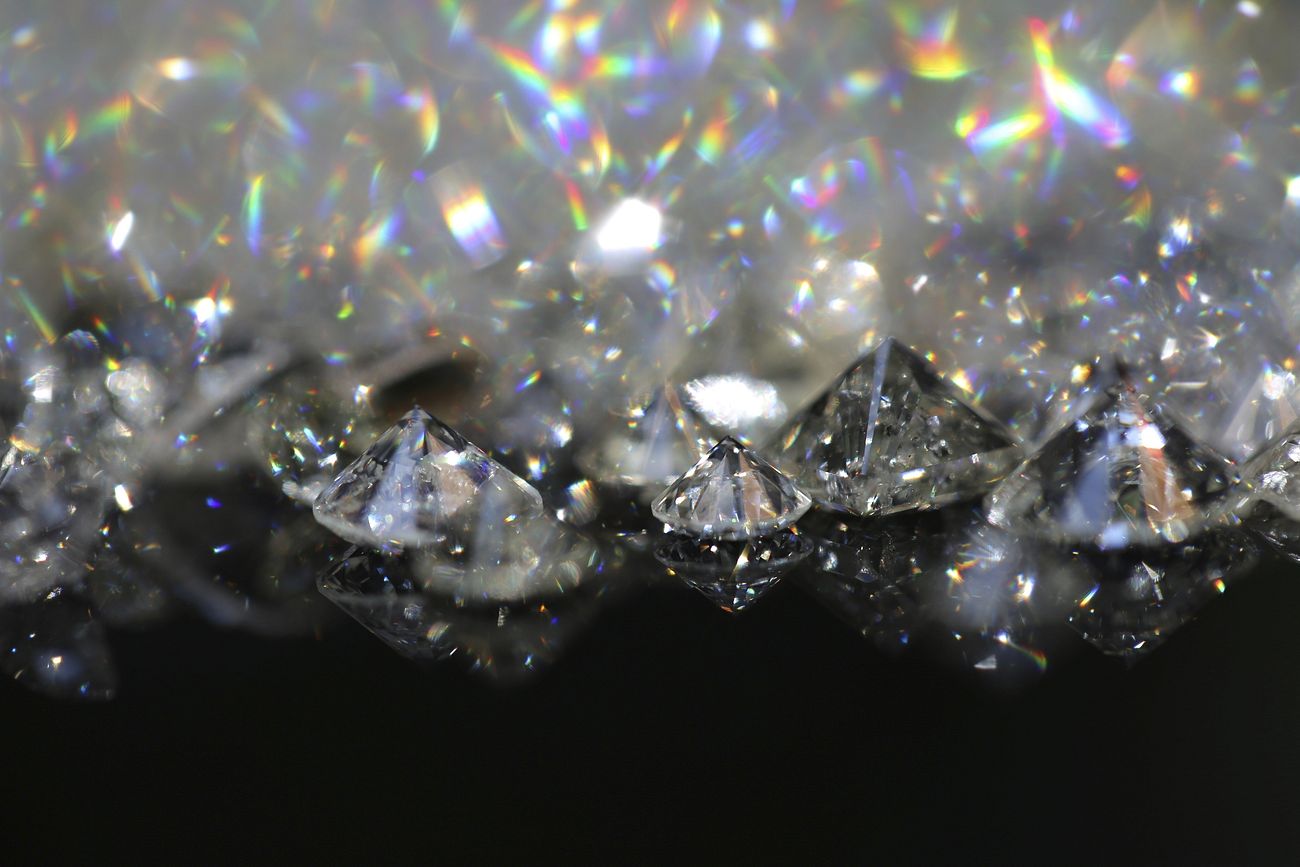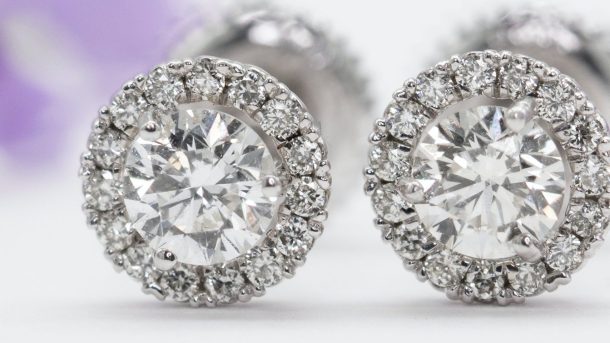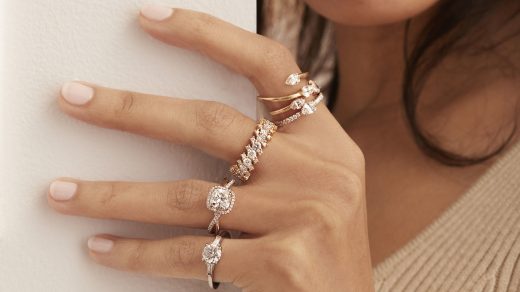This captivating article offers you a unique opportunity to delve into the rich and enchanting history of diamonds. Discover how these precious gemstones have captivated hearts and minds for centuries, their significance in various cultures, and the allure of their timeless beauty. You will unlock the secrets and stories behind these sparkling treasures, leaving you with a newfound appreciation for their enduring prestige.

Ancient Origins
Early Discoveries of Diamonds
In ancient times, diamonds were first discovered and revered for their exceptional beauty and rarity. The earliest known discoveries of diamonds can be traced back to India, where they were found in alluvial deposits along the rivers. These precious gems were highly valued and traded as luxury items. The ancient Indians, known as the Vedic people, believed that diamonds were formed from lightning-striking rocks, attributing the stones to divine powers and spiritual significance.
The Symbolic Significance of Diamonds
Beyond their physical attributes, diamonds held profound symbolic significance in various ancient cultures. In Indian mythology, diamonds were associated with the gods and were believed to bring good fortune, strength, and protection. The Greeks, on the other hand, believed that diamonds were tears of the gods or fragments of falling stars. Diamonds were also seen as symbols of power, courage, and invincibility, adorning the crowns and royal regalia of ancient rulers.
Diamonds in Ancient Civilizations
Diamonds found their place of prominence in many ancient civilizations, including ancient Egypt, Rome, and China. In Egypt, diamonds were considered sacred and were believed to possess magical properties. They were referred to as the “tears of the gods” and were used not only for adornment but also for engraving and offering tributes to the deities. In Rome, diamonds were highly sought after by the elite class and were worn as jewelry to signify wealth and social status. In China, diamonds were held in high regard for their beauty and rarity, and they were believed to bring harmony, luck, and protection.
The Renaissance Era
Diamonds as Royal Treasures
During the Renaissance era, diamonds became synonymous with royalty and nobility. European monarchs, such as Queen Elizabeth I of England and King Louis XIV of France, adorned themselves with elaborate diamond jewelry as a display of wealth and power. Diamonds were seen as a symbol of divine right and were used to enhance the monarchs’ regal image. These extravagant displays of diamonds by royalty sparked a global fascination with these precious gems and solidified their status as a symbol of prestige.
The Artistry of Diamond Jewelry
The Renaissance period witnessed a flourishing of art and culture, and diamond jewelry became an integral part of this artistic movement. Skilled artisans crafted intricate and elaborate designs using diamonds, incorporating them into stunning pieces that showcased both the beauty of the gems and the artistic prowess of the craftsmen. Diamond-studded accessories adorned not only the royalty but also the wealthy elite, who sought to emulate the opulent fashion styles of the aristocracy.
Diamonds in High Society
Diamonds during the Renaissance era were not limited to the royal and noble class. The rising merchant class and wealthy businessmen also embraced diamonds as a symbol of status and success. In this era of increasing wealth and prosperity, individuals sought to display their affluence through luxurious diamond jewelry. Diamonds became a status symbol among the elite and were often flaunted at social gatherings and events as an expression of wealth and refined taste.
Diamonds in Colonial Times
Colonial Exploration and Diamond Trade
As European powers expanded their territories through colonial exploration, they encountered new sources of diamonds. In particular, the Portuguese explorers were influential in discovering diamond deposits in Brazil during the 18th century. These newfound sources of diamonds significantly impacted the global diamond market by increasing the supply and making diamonds more accessible to a broader range of people.
Diamonds and the European Elite
During colonial times, diamonds maintained their allure among the European elite, who continued to indulge in diamond jewelry as a symbol of elegance and social standing. Diamonds were considered a treasure of the colonies and were heavily sought after by the European upper class. The ruling classes of various European empires adorned themselves with exquisite diamond jewelry, reinforcing the prestige associated with these gems.
The Controversial Diamond Mines
The expansion of diamond mining during colonial times was not without controversy. As European powers exploited new sources of diamonds, the conditions for the workers within the mines were often deplorable. Many diamond mines were known for their harsh labor practices and mistreatment of workers. Additionally, conflict diamonds, also known as blood diamonds, emerged as a dark side of the diamond trade, with diamonds being used to finance armed conflicts, particularly in Africa.
Industrial Revolution and Diamond Mining
The Rise of Industrial Diamond Mining
The Industrial Revolution brought sweeping changes to the diamond industry. Advances in technology and machinery enabled the mass extraction of diamonds, moving away from the labor-intensive methods of the past. Underground mining and later open-pit mining techniques were developed, revolutionizing the way diamonds were extracted and increasing the overall production.
The Impact on Diamond Market and Accessibility
The industrialization of diamond mining led to a significant increase in the global supply of diamonds. As production soared, the once-exclusive gemstones became more accessible to the growing middle class. The increased availability of diamonds resulted in a gradual shift from diamonds being reserved for the privileged few to becoming a popular choice among a broader range of consumers.
Diamonds and the Middle Class
With the increased accessibility of diamonds during the Industrial Revolution, the middle class embraced diamond jewelry as a symbol of prosperity and aspiration. Rising economic fortunes allowed the middle class to indulge in diamonds, and the gemstones found their way into engagement rings, brooches, and other forms of personal adornment. Diamonds became an emblem of success and social mobility, no longer confined to just the upper echelons of society.
The Diamond Rushes
The California Gold Rush and Diamonds
The mid-19th century witnessed a significant influx of people to California in search of gold during the California Gold Rush. During this period, diamonds were also discovered in California, although they did not prove to be as lucrative as the gold discoveries. Nonetheless, the allure of diamonds added to the fascination of the Gold Rush and contributed to the ongoing diamond fever that swept across the world.
Diamond Fever in South Africa
While diamonds were known to exist in Africa for centuries, it was in the late 19th century that diamond deposits were discovered in South Africa, particularly in the region known as Kimberley. The discovery of vast diamond deposits sparked a diamond rush, as people from all walks of life flocked to the region in search of their fortune. This diamond rush transformed South Africa into a major player in the global diamond industry and forever altered the dynamics of the market.
Diamonds and the Wild West
The diamond rushes in California and South Africa captured the imagination of people worldwide, leading to a romanticized depiction of diamonds and the Wild West. The prospect of finding diamonds became the stuff of dreams and legends. The narratives spun around diamond mining during this time fueled perceptions of diamonds as symbols of adventure, wealth, and untamed frontiers.
The Cult of Diamonds
Diamonds in Pop Culture
As diamonds continued to captivate the world, they made their way into popular culture, further cementing their status as a symbol of prestige and desire. Movies, novels, and songs glamorized diamonds, portraying them as tokens of love, luxury, and aspiration. Diamonds became ingrained in the collective consciousness, reinforcing their allure and sparking a fascination that transcended social boundaries.
Diamonds and Celebrity
The association between diamonds and Hollywood celebrities further amplified the prestige surrounding these precious gems. Iconic figures like Elizabeth Taylor and Marilyn Monroe popularized the concept of diamonds as a girl’s best friend, forever linking diamonds with beauty, glamour, and the world of fame. Red carpet events and award ceremonies became showcases for stunning diamond jewelry, with the glimmering gems adorning the necks, ears, and wrists of elite celebrities.
The Influence of Advertising
The diamond industry leveraged the power of advertising to further bolster the desirability of diamonds. In 1947, the legendary “A Diamond Is Forever” campaign by De Beers revolutionized the marketing of diamonds. The campaign emphasized the emotional and sentimental significance of diamonds, associating them with everlasting love and commitment. This marketing strategy proved highly effective in shaping public perceptions of diamonds and establishing them as an essential component in engagement rings, further solidifying the timeless association between diamonds and love.

The Ethical Diamond Movement
The Issue of Blood Diamonds
Despite the glamour and allure surrounding diamonds, the industry faced a dark reality known as blood diamonds. Blood diamonds, also referred to as conflict diamonds, were diamonds mined in war zones and sold to finance armed conflicts against governments. These diamonds were associated with human rights abuses and suffering, perpetuating violence and instability in many African countries.
Diamonds and Conflict Zones
The issue of blood diamonds brought attention to the ethical concerns surrounding diamond mining. Consumers became increasingly aware of the potential negative impact of their diamond purchases and began seeking assurance that their diamonds were ethically sourced and did not contribute to conflicts or human rights violations. This increased demand for ethical diamonds led to the implementation of certification schemes, such as the Kimberley Process, to ensure that diamonds were mined and traded responsibly.
Ethical Mining and Sustainable Practices
In response to the demand for ethical diamonds, the diamond industry made strides toward promoting responsible mining practices and sustainability. Ethical mining certifications, such as the Responsible Jewellery Council (RJC) certification, set standards for environmental protection, social responsibility, and supply chain transparency. Additionally, diamond producers invested in community development programs, aiming to minimize the environmental impact of mining and improve the welfare of the local communities in which they operated.
Modern Diamond Market
The De Beers Monopoly
Throughout the 20th century, De Beers dominated the diamond market, holding a near-monopoly on the global diamond trade. De Beers’ control over the supply and distribution of diamonds allowed them to stabilize prices and maintain the perception of diamonds as valuable and desirable. This monopoly was instrumental in shaping the diamond industry, influencing both supply and demand dynamics.
Emerging Diamond Producers
In recent decades, the diamond market has witnessed a shift with the emergence of new diamond-producing countries such as Russia, Australia, and Canada. These countries have become major players in the global diamond industry, diversifying the sources of diamonds and challenging the dominance of traditional producers. With increased competition, the dynamics of the diamond market have evolved, offering consumers a wider range of options and influencing pricing trends.
Trends and Innovations in Diamond Industry
The modern diamond industry has embraced innovative technologies and trends to cater to evolving consumer preferences. Lab-grown diamonds, created using advanced techniques in controlled environments, have gained popularity for their sustainability and accessibility. Additionally, unusual diamond cuts, colored diamonds, and personalized designs have become increasingly sought after, highlighting the demand for unique and individualistic diamond jewelry.

Diamonds as Investments
The Investment Value of Diamonds
Diamonds have long been considered a store of value and an alternative investment. Like other precious commodities, diamonds can serve as a hedge against inflation and economic uncertainty. Their inherent scarcity and enduring allure contribute to their investment appeal, particularly among those seeking to diversify their investment portfolios.
Factors Affecting Diamond Prices
The value of diamonds is influenced by several factors. The Four Cs – carat weight, cut, clarity, and color – determine the quality of a diamond and significantly impact its price. Additionally, market demand, rarity, and trends in consumer preferences play a role in shaping diamond prices. Factors such as supply chain transparency and ethical certifications also contribute to the value of diamonds in an increasingly socially conscious marketplace.
The Future of Diamond Investments
The diamond investment landscape is expected to evolve in the coming years. The growing interest in sustainably sourced diamonds and the emergence of lab-grown diamonds may disrupt the traditional diamond market. As consumer preferences shift towards personalized and unique designs, custom-made diamond jewelry may gain traction as an investment option. The increasing focus on ethical and sustainable practices in the industry is likely to shape the future of diamond investments, with conscious consumerism playing a significant role.
Diamonds in the 21st Century
Changing Perceptions of Diamonds
In the 21st century, the perception of diamonds has evolved in response to changing societal values and consumer preferences. While diamonds still hold the position of enduring symbols of love and commitment, their significance extends beyond romantic relationships. Diamonds are now often seen as personal expressions of style, self-reward, and individual achievements. The emotional connection to diamonds continues to be strong, but the emphasis has shifted towards self-expression and personal storytelling.
New Generations and Diamond Preferences
The preferences of younger generations, such as Millennials and Gen Z, have influenced the diamond industry’s approach to marketing and product offerings. These generations value experiences, uniqueness, and sustainability. As a result, trends such as personalized and customizable diamond jewelry, lab-grown diamonds, and responsible sourcing have gained traction. The industry has responded to this shift by focusing on transparency, and ethical practices, and offering a wider range of diamond jewelry options to cater to the evolving tastes of younger consumers.
Diamonds as Symbols of Love and Success
Despite the changes in perceptions, diamonds continue to hold a special place as symbols of love and success. Engagement rings, in particular, remain a timeless tradition, symbolizing a lifelong commitment. Diamonds are chosen to represent the enduring nature of relationships and the everlasting bond shared between partners. Additionally, diamonds are frequently used to commemorate significant milestones and achievements, expressing success, accomplishment, and celebration.
In conclusion, diamonds have journeyed through history as captivating gems that have symbolized wealth, power, love, and aspiration. From their ancient origins rooted in mythology to their prominence in modern society, diamonds have undergone various transformations and have emerged as enduring symbols of prestige and desire. While the diamond industry has faced ethical challenges and witnessed technological advancements, the allure and timeless beauty of diamonds continue to captivate the human imagination, making them objects of fascination and enduring symbols of love and success.
© 2022-2023 by diamondstudsource. All rights reserved. No part of this document may be reproduced or transmitted in any form or by any means, electronic, mechanical, photocopying, recording, or otherwise, without prior written permission of diamondstudsource.com.




